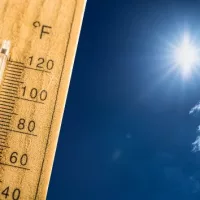
(NEW YORK) — Fish, sea turtles, elephants, sharks, shorebirds and more of the world’s migratory species are in dire decline, according to the first-ever State of the World’s Migratory Species report from the United Nations.
“This report showed us for the first time, in a very sobering way, that across the globe, over half the species that migrate are in decline. And that’s largely because of human activities,” Mark Hebblewhite, professor of wildlife ecology at the University of Montana, told ABC News Monday. “Migration allows animals to achieve greater numbers. So if we lose migration, we lose lots of numbers of animals.”
Approximately 44% of migratory species across the world are in population decline and more than 20% of migratory species face extinction, according to the U.N.’s report, published Monday.
Migratory species are defined as wild animals whose entire population, or any geographically separate part of the population, periodically and predictably cross one or more national jurisdictional boundaries at different times in their lifecycles, according to the U.N.
“They regularly travel, sometimes thousands of miles, to reach these places. They face enormous challenges and threats along the way as well at their destinations where they breed or feed,” Amy Fraenkel, executive secretary for the Convention on Migratory Species of Wild Animals (CMS), told UN News.
Of the 1,189 species monitored for the report, migratory fish face the most dire threat, with 97% of the species on the brink of extinction.
“The situation is far worse in aquatic ecosystems,” the report said.
The report lays blame at the hands of human activity and climate change, saying overexploitation, such as illegal hunting and fishing, and habitat loss have led to the worrisome population decline.
“Migratory species encounter more problems,” Hebblewhite said. “And we as a species, humans, are generally the reason for these problems.”
In terms of climate change, the report calls for increased global efforts to reduce chemical, plastic, light and noise pollution are needed to reduce humans’ impact on the world’s ecosystems.
The boom of agriculture and urbanization has led to “loss or reduction in important habitats such as stopover sites or deterioration in breeding and foraging habitats,” according to a statement by Graeme Taylor, CMS Science Councilor for New Zealand.
Urgent action is recommended in the report to preserve the species that are most threatened — this means protecting not only the at-risk animal groups but also their migratory sites.
“We put up fences, we put up roads, we put up barriers, we change land use, we drain our wetlands and we make a farm that changes the migratory stopover sites for birds,” Hebblewhite said.
Migratory species in Asia are the most threatened, according to the report, which states species in North America and Africa follow in experiencing the most decline.
Alternatively, migratory species in Europe, Central America, South America and the Caribbean have presented population increases.
There are 4,508 total species that are considered migratory, according to the report, which notes 399 of those species were not covered in the findings and “deserve greater attention.”
“In the future, it would be wonderful to see the scope of this important work expand to also include assessment of species that are not currently listed on the CMS appendices,” Dr. Philippa Brakes, chair of the CMS Expert Group on Animal Culture, said in a statement.
Brakes noted that the report “shines a light on the complexity of conserving migratory species,” but maintains that “collaboration between nations” is needed “to ensure that populations thrive.”
The first-of-its-kind report was prepared by conservation scientists at the UN Environment Programme for CMS’ 14th Conference of the States Parties in Samarkand, Uzbekistan from Feb. 12-17.
Copyright © 2024, ABC Audio. All rights reserved.















